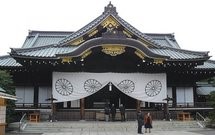 By definition a war memorial is a building or monument to celebrate a war or victory or, as in present times, to remember those who died or were injured in war. Several regiments in the British Army have constructed monuments to their comrades who had fallen in conflict. Several towns and cities in the United Kingdom have also raised war memorials to remember those had had lost their lives in war from their communities.
By definition a war memorial is a building or monument to celebrate a war or victory or, as in present times, to remember those who died or were injured in war. Several regiments in the British Army have constructed monuments to their comrades who had fallen in conflict. Several towns and cities in the United Kingdom have also raised war memorials to remember those had had lost their lives in war from their communities.
India is probably the only major country in the world without a war memorial to honor those who died after its Independence in defense of the country. But, it does have war cemeteries like the one in Kohima that is supervised by the Commonwealth War Graves Commission, and bears the poignant epitaph, “For Their Tomorrow, We Gave Our Today.” Both war memorials and war cemeteries have dogged by controversies.. During the 150th year anniversary of the Sepoy Mutiny 1857, for instance, a vicious agitation was launched in Lucknow to prevent the descendants of English men and women who died there from visiting their graves.
The controversy relating to Prime Minister Shinto Abe recent visit to the Yasukuni shrine in Tokyo is significant in this context. It is dedicated to those who died serving Japan during 1867–1951. It is believed to house the souls of those interred there, and no distinction is made in this Shinto shrine between military and civilian martyrs; Its activities being religious in nature the priesthood has autonomy to decide on the enshrinement of individuals, which is permanent and irreversible. The local belief is that enshrinement ensures absolution or forgiveness from all transgressions.
Controversy surrounds the Yasukuni shrine because several war criminals identified by the International Military Tribunal for the Far East (IMTFE) are buried here. The IMTFE had convicted 1,068 persons in 1946 for war crimes committed during World War II. Significantly, the IMTFE only included the victors of World War II like Australia, the Republic of China (now Taiwan), India, the Netherlands, United Kingdom, United States, and the Soviet Union.
The Indian representative, Justice Radha Binod Pal, had objected to the "Best Evidence Rule" followed by the Tribunal that permitted hearsay, with no supporting proof, to be used in charges against the accused. More egregiously, the victors were not charged for their mass killings of non-combatants in fire-bombings of major cities, including the hideous atomic bombings of Hiroshima and Nagasaki.
Chinese and Korean leaders have ritually protested against Japanese politicians visiting the Yasukuni shrine. Their objections arise because the Shinto ideology imbuing the shrine justifies any war waged in the name of the emperor. Hence, the shrine is deified by ultra right-wing organizations in Japan. A major grievance in China and South Korea is that Yasukuni honors “Class A” war criminals, which requires an explanation.
"Class A" crimes are those committed by persons in the highest decision-making bodies who conspire to start and wage war, thus committing a “ crime against peace,” defined in international law as "planning, preparation, initiation, or waging of wars of aggression, or a war in violation of international treaties, agreements or assurances, or participation in a common plan or conspiracy for the accomplishment of any of the foregoing. " The more common war crimes, like shooting prisoners fall into "Class-B", while crimes against humanity, eg. genocide is treated as a "Class-C" war crime.
Significantly, Hirohito and members of the imperial family were not prosecuted as class-A war criminals. Apparently, “the Truman administration and General MacArthur both believed the occupation reforms would be implemented smoothly if they used Hirohito to legitimize their changes," which highlights the political nature of the Tokyo trials and its biased conclusions. The Indian judge, Radha Binod Pal, incidentally, distanced himself from the Tribunal’s findings, and criticized its judgment as reflecting a victor's peace and revenge.
Historical memories of past grievances are deeply embedded in the national psyche of China and South Korea. China cannot forget Japanese atrocities like the Nanjing massacre in 1937 or the human experiments on Chinese citizens during the Sino-Japanese War (1937–45) by Japan’s infamous Unit 731to test biological weapons. And, South Korea cannot forget the comfort women’s issue, which Japan has not yet resolved to Seoul’s satisfaction.
Visits to the Yasukuni shrine by Japanese leaders only serves to reopen these wounds. Can this situation be remedied? Would mutual visits to each other’s war memorials help, given their symbolism? Is a visit by Shinzo Abe to the Nanjing war memorial or the War Memorial of Korea in Seoul unthinkable? Is suggesting a visit by Xi Jinping and Ms Park to the Yasukuni shrine a wholly outrageous proposition ?
It bears mention that if the Allies had lost World War II Winston Churchill, Charles de Gaulle and Josef Stalin could have been branded war criminals by the Axis powers. And, the war memorials in the U.K., France, and Soviet Union would have acquired the same liabilities as the Yasukuni shrine. This thought might help China and Japan gain a new perspective on Japan’s Yasukuni dilemma.
By Special Arrangement with : Institute of Peace and Conflict Studies (http://www.ipcs.org)